Brian Meert's Blog, page 40
September 10, 2023
The Ultimate Guide to Amazon Product Research

Are you an Amazon seller looking to conduct Amazon product research?
In the competitive e-commerce world, you need to find the right product niche and best-selling products. Fortunately, an effective Amazon product research tool can point you in the right direction.
This article will provide all the information you need to conduct successful product research on Amazon.
Why is Amazon Product Research Crucial?Amazon product research isn’t just a fancy term – it’s your secret weapon for success on the platform. Let’s break down why it’s so important:
1. Understanding the competition.Amazon is a bustling marketplace with millions of sellers. By conducting product research, you get the lowdown on what your competitors are doing. You’ll discover what products are selling fast and where there might be room for your unique offering.
2. Finding profitable gems.Imagine investing time and money in a product that nobody wants. Ouch! Product research helps you identify those golden nuggets – products with high demand and profit potential. It’s like having a treasure map for your business.
3. Minimizing risk.Starting an Amazon venture without product research is like driving with your eyes closed – a recipe for disaster. With research, you make informed decisions. You can assess risks, predict outcomes, and avoid costly mistakes.
4. Optimizing pricing.Product research helps you set the right price for your items. It considers the costs, market competition, and what customers are willing to pay. Optimizing your pricing ensures you make a profit while remaining competitive.
Factors to Consider When Conducting Amazon Product Research

There are several factors to consider before carrying out product research on Amazon. They include:
Demand.The first rule of selling is simple: satisfy customer demand. Amazon offers tools like “Best Sellers” and “Amazon BSR Tracker” to help you gauge product demand. You should look for consistently high-demand products, as these are the best product ideas for generating high sales. Also, you can use keyword research to identify product demand.
Competition.Your odds of winning improve when you have fewer competitors. Hence, you should research the level of competition for your chosen product. If too many sellers offer the same category of products, it might be challenging to stand out. Therefore, you should seek product niches with low competition to increase your chances of success.
Profit margins.Picture running a lemonade stand. To make a profit, you need to know your costs and how much you can charge. Calculate all your expenses, from product costs to Amazon fees and shipping costs. You should set competitive product prices while making a healthy profit.
Trends and seasonality.Some products have their moments, like fashion trends. Research whether your chosen product is an evergreen item, in demand year-round, or if it’s seasonal. Understanding the product’s trends helps you plan your inventory and marketing strategies accordingly.
Customer reviews.Think of customer reviews as valuable feedback from friends. You should study similar product reviews to understand what customers like and dislike. This information will help you improve your product or offer a unique selling proposition.
Legal and safety considerations.As drivers have traffic rules, selling on Amazon has its own rules. Check for any legal requirements, patents, or safety standards related to your chosen product. Compliance is essential to avoid potential legal issues.
Shipping and fulfillment.It would be best if you considered how your products will reach consumers. There are two options for handling shipping and fulfillment: Amazon’s FBA service or handling it yourself. You should choose a method that aligns with your business model and ensure it is timely and reliable.
Read more: Amazon FBA vs. FBM.
How To Use Amazon Product Research Tools

Below is a step-by-step guide to using Amazon product research tools to research products in high demand:
Step 1: Choose the right tool.You need the right tool for the job. There are several Amazon product research tools, such as Jungle Scout, Helium 10, and AMZScout. Each tool offers different features, so you must research to find one that suits your needs and budget.
Step 2: Start with a broad search.Imagine panning gold in a river; you would start with a broad search to find promising areas. In Amazon product research, this means entering relevant keywords related to your niche or interest. The product research tool will generate a list of products that match those keywords.
Step 3: Filter and sort.Now that you have a shortlist of products, it’s time to refine your search. Most tools allow you to filter and sort the results based on criteria like price, sales rank, and reviews. You can set filters to show products that meet your specific requirements.
Step 4: Analyze sales data.Look at sales data for the products on your list. You should pay attention to factors like:
Sales volume: How many units are being sold per month?Price: What’s the average selling price?Competition: How many sellers are offering the same product?Profit margin: Can you sell at a price that ensures a good profit?Step 5: Check historical sales data.It would be best if you remembered trends change like the weather. Most tools provide historical data showing how a product’s sales and prices have evolved. This data can help you spot seasonal or declining products.
Step 6: Read reviews and ratings.Customer feedback is your compass. Analyze reviews and ratings for the products you are interested in. Look for recurring issues or features that customers love. This information can guide your product selection and improvement efforts.
Step 7: Spy on competitors.Many tools offer competitor analysis features. You can use them to peek at your rival’s products, sales volumes, and pricing strategies.
Step 8: Track keywords.Keyword tracking helps you discover relevant search terms that customers use. Also, keyword tracking can be a goldmine for optimizing your product listings and marketing campaigns.
Step 9: Stay updated.It would be best if you remembered that Amazon is a dynamic marketplace. What’s profitable today might be out of demand tomorrow. So, regularly, you can use your product research tool to keep up with changing trends and opportunities.
Read more: Amazon dynamic pricing.
ConclusionAmazon product research is essential in building a successful business on the platform. It’s the key to unlocking profitable opportunities, outsmarting the competition, and avoiding costly blunders. So, remember: Research well, and you’ll thrive on Amazon’s vast horizon. Happy selling!
Did you know you can run ads on Amazon to boost your sales? Consult the best Amazon advertising agency today.
Frequently Asked QuestionWhat is Amazon product research, and why is it important?Amazon product research involves finding and evaluating potential products to sell on Amazon. It helps sellers identify profitable opportunities, understand customer demand, and make informed decisions.
How do I find profitable and relevant products to sell on Amazon?You can explore Amazon’s Best Sellers, use Amazon product research tools, and analyze customer reviews to find profitable products. Also, you will need to track trends and check for products with low competition and high demand.
What factors should I consider when doing Amazon product research?When conducting Amazon product research, you should consider product demand, competition, profitability, trends, and customer reviews. In addition, you need to consider legal requirements, shipping, costs, and your passion and knowledge in a particular niche.
Related ArticlesSeptember 9, 2023
What Is The Amazon Restocking Fee For?
Do you want to learn about the Amazon restocking fee?
While Amazon offers numerous advantages for buyers and sellers, one aspect of the Amazon shopping experience often raises questions: the restocking fee. Understanding this term is crucial for making informed decisions whether you are a seller or a buyer.
This article aims to shed light on Amazon’s restocking fee policy.
What Is Amazon Restocking Fee?An Amazon restocking fee is what Amazon charges customers for returning certain products to them. The restocking fee is designed to cover the costs of processing and inspecting returned items. It also includes the possible depreciation in the item’s value when it is returned and resold as “open box” or refurbished.
When managing their Amazon seller restocking fee, the seller and buyer must understand the return window specified in the product’s listing. Products sent from Amazon are eligible for return within 30 days after delivery. However, there are certain exceptions to this policy.
Read more: How to sell used items on Amazon.
How Much Is the Amazon Restocking Fee?As per Amazon’s 2023 rules, sellers can charge a restocking fee of 20% to 50% of the item’s cost when returned. The exact amount depends on why it is returned, the product type, and its condition. It is important to check Amazon’s returns policy and restocking fee before charging your customer.
When Does Amazon Apply the Restocking Fee?Amazon applies restocking fees in specific situations. The return policy allows for customer returns but provides a framework for sellers to charge restocking fees if certain conditions are met. It is applied when customers return certain types of products in particular conditions:
1. Change of mind or purchase regret: Amazon charges restocking fees when customers return items because they changed their minds or regretted the purchase. When customers return items, there are associated operational costs for Amazon. Restocking fees help offset some of the expenses.

2. Found the same item for a lower price elsewhere: Items opened or used may lose value. It makes it necessary for Amazon to sell them at a discount. Restocking fees can compensate for the reduced resale value of such items.
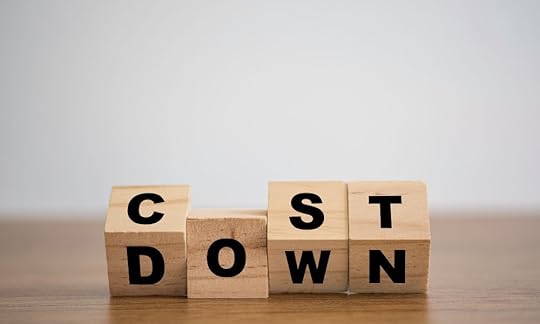
3. Accidentally bought it or didn’t need it anymore: The presence of restocking fees can encourage customers to make informed purchasing decisions. It helps cover the return processing costs and encourages responsible purchasing behavior.

Amazon does not charge a restocking fee under the following circumstances:
1. Item doesn’t match its description: It is generally recognized in consumer protection regulations that if a product doesn’t match the description provided, customers can file a claim. This practice helps ensure customers receive what they expect based on the product’s description.

2. Customers receive damaged, missing, or defective products: Retailers like Amazon aim to maintain the quality of their products. If customers consistently had to pay restocking fees for defective or missing items, it could discourage them from reporting defects. It could undermine the retailer’s ability to identify and address quality issues.

Here are some best practices for handling restocking fees:
Clear and transparent policies: State your return and restocking fee policies in your product listings. Make sure customers are aware of these policies before making a purchase. Transparency helps manage expectations.Detailed product descriptions: Ensure that your product listings are accurate and detailed to minimize the chances of customers returning items because they didn’t meet their expectations.High-quality packaging: Use secure and protective packaging to reduce the likelihood of items being damaged during shipping. It can help minimize returns due to shipping-related issues.Accurate product images: Use high-quality images that accurately represent the product. Misleading images can lead to returns.Responsive customer service: Provide excellent customer service. You should have timely responses to inquiries and concerns. Address customer issues promptly and professionally to avoid disputes that might result in returns.Inspect returned items carefully: When you receive a returned item, inspect it thoroughly to determine if it is in resalable condition. Ensure all accessories and components are included. Sellers can offer a partial refund instead of applying the full restocking fee. It depends on the situation and the condition of the returned item.Final ThoughtsAmazon’s return policy aims to strike a balance between buyer and seller interests by offering the possibility of a partial or full refund to the buyer under certain conditions. When managing returns, sellers must communicate their policies, including when they may charge restocking fees, to avoid buyer misunderstandings. It is important to note that Amazon’s return policies can vary by product category and seller.
Would you like to increase brand awareness and visibility for your business? Work with the best Amazon advertising agency!
Frequently Asked QuestionsDo I have to process returns on Seller Central?Sellers can access their return policies through their seller central account, which allows them to define conditions for restocking fees in various situations.
How do I handle restocking fee disputes?In some cases, restocking fee disputes may arise between sellers and customers when there is disagreement about the condition of returned items. When a customer disputes a restocking fee, listen carefully to what they say.
Who handles the return shipping costs?If you use Amazon’s FBA service, they pay for return shipping. But if you’re a third-party seller handling your orders, you must pay for return shipping and refunds.
Related ArticlesAmazon FBA vs. Dropshipping: Which Is Better?
Amazon FBA vs. Dropshipping: Which one works best for your brand?
This is one of the hottest debates in the online retail business. It’s important because it’s a decision that can significantly impact your business strategy and success.
This blog post will break down the pros and cons of Amazon FBA and dropshipping to help you make an informed choice. You should read it whether you’re a budding entrepreneur or an experienced seller looking to switch gears,
What Is Amazon FBA?

Amazon FBA stands for “Fulfillment by Amazon.” It is a service offered by Amazon that allows brands to leverage Amazon’s network of fulfillment centers. Amazon sellers can use the centers to store, pack, and ship their products to customers.
They send their products to Amazon’s fulfillment centers, which are stored until sold. Amazon manages the storage and inventory levels. It also manages the entire fulfillment process when a customer orders a product listed by an FBA seller. This includes picking the product from inventory, packing it, and shipping it to the customer.
What Is Dropshipping?

On the other hand, dropshipping refers to a business model where sellers list and sell products on Amazon’s marketplace. Instead of holding inventory, sellers purchase a product directly from a third-party supplier or wholesaler whenever they get an order. They then ship it directly to the customer. The seller doesn’t have to physically handle or store the product in a warehouse.
Read moreAmazon FBA vs. FBM.
Amazon FBA vs. Dropshipping: The DifferenceAmazon FBA and dropshipping are two distinct e-commerce business models. Each has its own set of pros and cons. Here is a breakdown of the key differences between Amazon FBA and dropshipping:
1. Inventory management:Amazon FBA: With FBA, you need to purchase and send your inventory to Amazon’s fulfillment centers. Amazon takes care of storage, packing, shipping, and customer service. Also, you have more control over your inventory but may incur storage fees for long-term storage.Dropshipping: In dropshipping, you don’t need to hold physical inventory. Instead, you source the products from suppliers or wholesalers and only purchase them when you sell. It minimizes upfront costs and eliminates the need for storage space. Hence, setting up a dropshipping store can be a cost-effective way to start an online business.2. Shipping and fulfillment:Amazon FBA: When comparing Amazon FBA and dropshipping, one crucial aspect to consider is the shipping process. Amazon handles all shipping and fulfillment tasks, including picking, packing, shipping, and customer service inquiries. It can provide faster shipping times and access to Amazon Prime customers.Dropshipping: When managing an online store, understanding the shipping process is vital. A key advantage of dropshipping is that you can rely on your trusted dropshipping supplier to handle the shipping process. However, shipping times and service quality can vary depending on your suppliers’ locations and capabilities.3. Control over products:Amazon FBA: You have more control over the product quality, branding, and packaging since you send your inventory to Amazon. You can also customize your Amazon listings.Dropshipping: You have limited control over product quality and fulfillment speed since you depend on suppliers. Also, customizing product listings and branding may take more work.4. Upfront costs:Amazon FBA: FBA typically requires higher upfront costs, including purchasing inventory and covering shipping fees to Amazon’s fulfillment centers.Dropshipping: Dropshipping involves lower initial costs since you don’t need to buy inventory upfront. You pay for products only when you make a sale.5. Risk and profit margins.Amazon FBA: You bear the risk of holding inventory, which can lead to potential overstock or unsold products. Profit margins can be higher when you can source products at a lower cost.Dropshipping: Dropshipping carries less risk in terms of inventory management. However, it can have lower profit margins due to supplier markups. Success often depends on selecting profitable niches and effective marketing.6. Scalability:Amazon FBA: Scaling an FBA business can be more complex. It involves managing larger inventories and dealing with logistics. However, access to Amazon’s vast customer base can facilitate growth.Dropshipping: Dropshipping can be easier to scale since you don’t need to invest heavily in inventory.7. Branding and customer loyalty:Amazon FBA: While you can build a brand on Amazon, it’s within the Amazon ecosystem. Customer loyalty may be tied to Amazon rather than your specific brand.Dropshipping: Dropshipping allows for more independent branding and customer loyalty. However, building trust can take time.Considerations for Selecting the Ideal Model

When choosing between dropshipping and Amazon, your decision should align with your business goals and resources. Here are the key factors to consider when selecting the ideal model:
Business goals: Dropshipping is ideal for those looking for a low-risk and low-cost entry into e-commerce. It is suitable if you want to test various product niches quickly. On the other hand, Amazon FBA is more appropriate if you aim for higher profit margins and long-term brand growth within the Amazon ecosystem.Available resources: Dropshipping requires fewer upfront financial resources because you don’t need to purchase inventory. It’s a good choice if you have limited capital to start. Meanwhile, Amazon FBA involves upfront costs for purchasing and shipping inventory to Amazon’s fulfillment centers, which may require more initial investment.Risk tolerance: Dropshipping will lower risk as you’re not committed to holding inventory. However, you are reliant on supplier performance. With Amazon FBA, there is a higher risk due to inventory investment, but you have more control over product quality and fulfillment.Control and branding: There is limited control over product quality, shipping times, and branding regarding dropshipping. There may be better choices than this if you want a strong brand identity. Conversely, Amazon FBA offers more control over branding and product quality.Target market and niche: Dropshipping is ideal for quickly testing various niches and products. This makes it flexible for exploring different markets. On the other hand, Amazon FBA is best suited for niches where you can offer unique value or products with higher profit margins.Scaling potential: Since you don’t hold inventory, it is easier to scale by adding new products or expanding into different niches. In Amazon FBA, scaling can be more complex. It involves managing larger inventories and logistics. However, it offers access to Amazon’s vast customer base.Competition: A dropshipping business model can be highly competitive due to its accessibility. Hence, finding profitable niches can be challenging. On the other hand, competition also exists in Amazon FBA, but it may vary depending on the product category. Research is crucial to identify less competitive niches.Customer loyalty: Building customer loyalty can be harder in a dropshipping model due to limited control over product quality and fulfillment. With Amazon FBA, it is easier to establish trust and retain customers, especially with Prime-eligible products.Operational complexity: Dropshipping is simpler in terms of inventory management. However, it can be complex to manage multiple suppliers. Meanwhile, Amazon FBA involves more comprehensive logistics and inventory management.Final Thoughts on Amazon FBA vs. DropshippingE-commerce business owners often weigh the pros and cons of Amazon FBA and dropshipping when deciding on their preferred business model. Amazon FBA sellers benefit from the convenience of utilizing Amazon’s warehouse and fulfillment services. Meanwhile, dropshipping has been popular for those who have low initial capital. Selecting the right e-commerce business model, whether an Amazon FBA venture or a dropshipping store, depends on your business goals and resources.
Are you looking to beat your competition on Amazon? Boost your sales with the best Amazon marketing agency!
Frequently Asked QuestionsWhich model offers faster shipping to customers?Amazon FBA provides faster shipping, especially for those with Amazon Prime’s fast delivery option.
What are the fees associated with Amazon FBA and dropshipping?Amazon FBA sellers incur fees for storage, fulfillment, and other services. Dropshipping typically involves fewer direct fees, but sellers may pay supplier costs and transaction fees.
Which model is better for customer loyalty and retention?Amazon FBA can make it easier to establish trust and retain customers. Dropshipping may make it more challenging to build customer loyalty due to limited control over fulfillment.
Related ArticlesThe Complete Guide to Marketing and Advertising Awards


Are you a business owner or agency eager to win a Marketing and Advertising Award? Do you want to understand the awards landscape so you can enter and improve your chances of winning? You’ve come to the right place!
Creative, Advertising and Marketing awards build credibility, can generate more business, provide credibility around your business along with shine a spotlight on your innovative campaigns. Winning these creative awards proves you are among the very best in the industry. Not bad for your reputation, right?
This step-by-step guide will explain everything you need to know about the big awards.
You’ll learn:
What marketing and advertising awards are and why they matterThe world’s top awards to target and winTips for crafting submissions that impress judgesHow awards can propel your brand, agency business, or careerExciting new trends influencing awardsAnd more.
Consider this your inside scoop into the glitzy world of marketing honors. Let’s start unlocking the secrets to bringing home those coveted statues!
What are Marketing and Advertising Awards?In simple terms, marketing and advertising awards honor creative excellence and the most effective campaigns. Judges review entries across different categories to choose which campaigns or content deserve trophies.
Think of an advertising awards show as a contest highlighting the best marketing ideas. Awards come in all shapes and sizes, from global honors to small regional ones.
Do Marketing Awards Matter?With so many shows and trophies out there, you may wonder – do awards really matter? The answer is yes! They absolutely confer major benefits to brands, agencies, and marketers who win them.
Here’s an overview of why awards success pays off:
For BrandsIncreased credibility – Earning well-respected awards boosts brand esteem and expertise. Consumers see award-winners as smarter choices.Earned media buzz – Winning major honors earns press and online media coverage, amplifying brand reach. This exposure is worth millions in equivalent ad spend.Business lift – Studies show brands winning prestigious awards grow faster on key metrics like sales, revenue, and market share. Recognition drives growth.Consumer bonds – Emotional award-winning work forges deeper connections with customers. It also increases engagement and loyalty.For Marketing AgenciesPrestige – Awards fill agency trophy cases and portfolios. This visibility attracts more clients to compete for pitches and leads.Higher fees – Awards correlation with results allows agencies to command higher prices. They validate performance.New business – Awards success is a top factor brands evaluate when hiring agencies. Awards signal competitive differences.Talent recruitment – Top creatives flock to the agencies with the most awards. Stars help agencies create more award-potential work.For Marketing ProfessionalsCareer development – Those behind big award-winning campaigns often see promotions, job offers, and professional fame.Skills showcase – Winning awards show proof of your marketing skills and achievements to advance your career.Industry leadership – Award winners gain visibility, allowing them to speak at conferences, judge awards, teach classes, and write books.Peer recognition – Among colleagues, awards indicate impact and talent. Colleagues recognise your worth and appreciate a job well done.So, in summary, awards provide huge ROI in exposure, growth, recruitment, and career development. They are marketing rocket fuel – the benefits far outweigh the costs and effort to win them.
How Marketing Awards Drive Innovation and CreativityWinning an award takes a lot of work. It forces people to take risks and try bold things. Brands want their ads and campaigns to beat those of competitors.
This competition makes the whole industry step up. People get inspired to come up with fresh ideas. New trends and techniques emerge.
Without international awards encouraging everyone to innovate, marketing and advertising would get boring fast.
Advertising Award Categories and CriteriaWith so many awards out there, how do judges decide what’s best?
Each program has categories for which they give awards. A digital marketing campaign and TV ad compete in separate groups.
Judges look for work that:
Meets a specific benchmarkShows new ideas and great craftIs a cut above the rest in its categoryAppeals to customers or has impressive resultsAwards focus on both creativity and real-world impact. Let’s explore what separates the award-winning work from the pack.
What makes a work award-worthy?You may be wondering – what’s the secret sauce of campaigns and content that earns those coveted trophies? Here are the key ingredients:
Killer Brand InsightsAll great marketing starts with deep human truths. Before any concepts, truly understand the brand and audience. Discover fresh insights others miss. Leading with an insightful core idea gives marketing power and purpose.
Innovation in Concept and ExecutionWinning work surprises and delights. Consider new ways to bring insights to life through:
An unexpected twist on old marketing tropesClever use of new media or technologiesA totally novel concept never seen beforeDo something inventive beyond the expected!
Artistic Craft and DetailsBring that big idea to life flawlessly. Sweat the details in design, writing, editing, cinematography, and more. Every component should work together seamlessly. Flawless artistic execution shows respect for the craft.
Measurable Business ImpactAt the end of the day, marketing must move metrics for brands. Demonstrate how your work delivered tangible impact against KPIs like:
Sales or revenue growthIncreased brand awareness/loveHigher engagement and conversionsEarned media and press buzzProving marketing effectiveness is a vital way to get recognition among major industry players.
Memorable StorytellingMake your work resonate emotionally through compelling storytelling. Tap into universal themes like triumph, connection, or laughter. Vivid, relatable stories help marketing cut through the noise.
Customer-Centric FocusTruly know your target audience. Ensure the messaging and media speaks to their needs and values. Marketing that puts customers at the heart wins empathy and attention.
Keep these pillars in mind, and your next campaign could score trophies! Now let’s explore major awards shows to target.
Major Global Marketing and Advertising AwardsThe awards world is vast, but some trophies hold more weight than others. Here are the global awards with major prestige in the industry:
Cannes LionsThe Cannes Lions Festival in France is considered the Oscars of advertising. Winning a Lion means your work was voted among the world’s best. This honor can make your career or brand. Notable past winners include Adidas, Coca-Cola, and Dell Technologies.
Top agencies and brands compete in categories from film to digital innovation. Entries from 90+ countries are judged by past winners. Just being shortlisted here is a huge accomplishment. The 2023 edition of the Cannes Lions International Festival of Creativity was held in June in Cannes, France.
CLIO AwardsSince 1959, the CLIO Awards have recognized innovation and creativity in advertising across all mediums, from TV to mobile. CLIO wins help agencies and brands build global prestige.
Gold, Silver, and Bronze CLIO statues are handed out in specialized categories. The coveted CLIO Image and Innovation Awards honor brilliant design and pioneering ideas.
D&AD AwardsD&AD stands for Design and Art Direction. This British award program celebrates the best ideas and executions in global advertising advertising and design specifically.
Winning the top Yellow Pencils or coveted Black Pencils and White Pencils demonstrates excellence in creativity. Even getting a nomination raises your profile.
The One Show AwardsUnlike shows focused solely on arts, The One Show rewards marketing effectiveness and impact. Gold, Silver, and Bronze Pencils are awarded across all types of campaigns.
The Best of Show Pencil honors the single best entry. This top prize helps agencies and brands build fame.
The Webby AwardsFor digital marketing, the Webby Awards are the highest honor. Websites, videos, apps, and full online campaigns compete to win this prestigious award. The International Academy of Digital Arts and Sciences selects nominees and decides on winners.
Winners have to deliver excellence in both creativity and technique. Winning this award brings great distinction to your work or brand.
EffiesMost shows focused on creativity. But The Effie Awards specifically honor marketing effectiveness and results. Winning an Effie demonstrates tangible success in hitting your KPIs.
Any campaign, brand, or agency that proves measurable impact can win. Effie wins signal you know how to move the metrics that matter.
MIXX AwardsThe MIXX Awards celebrate innovation in digital advertising and marketing in Europe. Top players compete for honors in categories like Best Use of Data and Best in Mobile.
Winners showcase cutting-edge skills to optimize digital experiences and campaigns. The MIXX trophy case signals digital marketing chops.
ANDY AwardsSponsored by The Advertising Club of New York, the ANDY Awards honor excellence in advertising across all media. Gold, Silver, and Bronze statues are awarded to the year’s most creative campaigns.
Winning this top advertising and marketing award helps agencies build a reputation for brilliant ideas and execution.
The Telly AwardsWith categories for TV/video, digital, and branded content, The Telly Awards celebrate visual storytelling across screens. Their mission is to honor world-class work that educates, entertains, and connects with viewers.
Since 1979, Telly has recognized the most innovative content creators across cable TV, streaming, and online video. Their iconic silver statues are globally recognized. International news channel Al Jazeera was a notable winner of The Telly Awards in 2022.
Adweek ARC AwardsThe Adweek ARC Awards specifically celebrate branding and rebranding excellence. Top brand marketers compete for trophies honoring innovation in brand design, strategy, and campaign execution.
Winning an ARC demonstrates smart, creative brand thinking that drives real business results. The Adweek editorial team helps curate entries.
Mobile Marketing Association AwardsFor mobile marketing, the MMA Smarties are considered the top global honor. Brands compete for trophies in specialized mobile categories, from apps to mobile displays.
Winning Smarties requires proof of engagement, innovation, and results across mobile touchpoints. They signal expertise in engaging audiences on mobile.
Other awards worth mentioning include:
Drum awardsOzzie awardsMarcom awardsCommunicator awardsDigiday content marketing awardsHow to Enter and Win Best Advertising and Marketing AwardsReady to throw your hat in the awards ring and battle for trophies? Here are key guidelines to set you up for success:
Eligibility Criteria and Submission ProcessCarefully review category definitions and rules to ensure your work is eligibleNote important dates like entry deadlines, notification dates, gala datesFollow the entry instructions closely and provide all required materialsPay attention to formatting rules for written, video, and image submissionsAccurately complete the online entry forms and double-check the detailsPreparing a Winning SubmissionAnalyze past winners to understand what made them stand outCraft a compelling overview summarizing your work and resultsSelect the best images, videos, and files to showcase the entry in the best lightWrite concise supporting materials that convince judges of the valueShowcase creativity, innovation, results, and impact in your entry contentEnsure all materials are high-quality, polished and error-freeCommon Mistakes to AvoidSubmitting entries to the wrong categories that don’t fit the workMissing critical entry deadlines or instructionsIncluding placeholder or incomplete contentFailing to explain the importance of your work and its effectivenessNot following formatting requirements for written, visual, and video contentGrammatical errors, typos, inconsistencies, or weak writingExpert Tips to Maximize Your ChancesPartner with an awards specialist or expert if availableHave senior leadership review your entries before submissionEnter work that filled a business need and solved a problemQuantify results and impact with hard metrics like ROIGet client testimonials and outside perspectives validating successRelate your work to cultural trends and current eventsResources and Tools for ApplicantsReview past winners for inspiration on submissionsRead blogs from awards organizations for insider tipsFollow top agencies winning awards to learn their strategiesUse available toolkits, webinars, and e-books on award entriesHire a professional writer or designer to polish submissionsConnect with others who have won and ask for adviceCarefully follow these guidelines, and your trophy case could quickly fill up.
Case Studies of Brands Transformed by Award RecognitionNow let’s look at some real-world examples of awards success. Like a good story, case studies show rather than just tell.
Get ready for some inspiring tales of brands that took home trophies and used them to transform their business and marketing. Awards acted like a secret sauce, kicking their success into overdrive.
#1: Coca-Cola’s Creative Spark
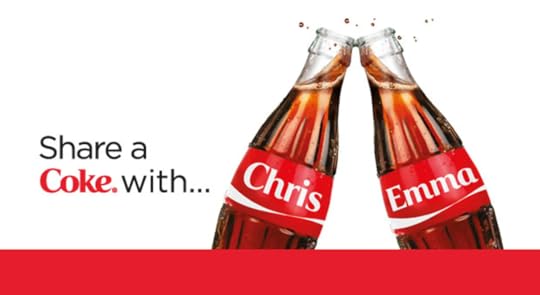
Imagine cracking open an icy cold Coca-Cola while watching your favorite flick. It’s a classic combo, right? Well, Coca-Cola didn’t become a global success overnight. Winning international advertising awards helped unlock their success.
Let’s walk through their awards journey:
The “Share a Coke” campaign featured personalized bottles that encouraged connections. More than just sharing a soda; it meant sharing a feeling. This heartwarming concept resonated hard with audiences.
But its true potential emerged when the campaign won honors like the Cannes Lions Grand Prix and Effie awards.
Here’s the magic:
Winning awards pushed Coca-Cola to keep taking artistic risks. Like winning an Oscar, it motivated them to craft more iconic work.The awards added credibility to the brand. People saw Coca-Cola as not just a beverage but a storyteller making memories.The takeaway: Follow Coca-Cola’s lead. Pursue creativity so stellar it earns awards. These honors boost brands and rally teams to shoot for the stars. Let your marketing win over hearts, minds…and judges!
#2: Dove’s Real Beauty Revolution

Dove soap didn’t just change the game – they rewrote the rules. Their “Real Beauty” campaign took the world by storm, redefining beauty standards.
Let’s recap Dove’s award-winning journey:
The campaign featured diverse women of all sizes, ages, and ethnicities. It started by winning Webby Awards, then gradually scored top honors like the Grand CLIO and Grand Effie.
Here’s the magic behind their awards success:
Winning wasn’t just about Dove – it was a victory for women everywhere. The message resonated with millions, and awards amplified its reach.Global awards like Cannes Lions propelled Dove’s story onto the world stage. It evolved into a movement embraced globally.The takeaway: Champion a cause that matters to your brand and customers. Earn awards not just for glory but for the positive change you create. It’s a win-win for your brand and society!
#3: Nike’s Unforgettable Swoosh
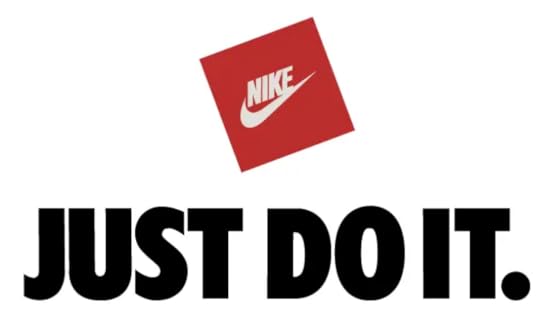
When you see that iconic Nike swoosh, you think of excellence in athletics and possibly the story of how a 21 year old designer Carolyn Davidson first created the swoosh logo for a mere $35. But how did the Nike logo become globally synonymous with sports?
Let’s review Nike’s awards journey:
Early on, Nike ran innovative campaigns celebrating star athletes. Awards like the American Advertising Awards recognized their top-notch creativity.
Here’s the magic this recognition unlocked:
Winning reinforced Nike as a brand about the spirit of athleticism – not just shoes.Their success inspired others to dream big. The swoosh became a symbol of both brand and mindset.The takeaway: Stay consistent in brand messaging, and let your story unfold. Awards are not just trophies – they make you part of your audience’s lives.
In marketing, awards unlock creativity, trust, and global impact. So, go create your award-winning story.
Future Trends in Marketing and Advertising Industry AwardsLike the industry, awards keep evolving in the digital age. Here are key trends to expect:
New Categories Reflecting Tech and CultureAwards shows are adding fresh categories related to new tech, platforms, and ideas like sustainability. This keeps awards relevant.
You may see new categories for:
Best use of AI, VR, or machine learning in marketingExcellence in influencer marketingBest social impact or purpose-driven campaignBest use of TikTok advertising or emerging platforms in the TikTok Awards.ClickFunnels Awards, celebrating sellers with 2 commas ($1,000,000) or more in sales.The Services Awards, featuring the best local Yelp advertising campaigns.The Meta Video Awards celebrating top performing Meta advertising and Instagram advertising video campaigns.As marketing and culture shift, awards adapt to stay meaningful.
Judging InnovationSome awards incorporate live presentations and Q&A into judging using digital tools. Others even use neuroscience tools to measure emotional reactions to entries.
Expect new technologies to provide deeper insights into effective award entries.
Cultural RelevanceAwards now celebrate marketing that positively impacts society, which helps build deeper consumer connections.
Look for awards honoring campaigns that promote sustainability, diversity, inclusion, and other cultural values.
Global GrowthMajor awards are expanding worldwide at a record pace and attracting work from more countries each year.
The push for diversity broadens perspectives. Expect rising prominence for regional shows like Dubai Lynx and Spikes Asia.
By evolving with the times, awards retain significance as marketing transforms. There are so many exciting opportunities to get in on the action.
ConclusionWe’ve covered a lot explaining marketing and advertising awards. Let’s recap the key points:
Awards Offer Major BenefitsWinning provides global recognition and credibility.Awards incentivize innovation and inspire the industry’s best work.They can fast-track careers and lead to promotions.Data shows awards correlate with business growth. They are marketing rocket fuel!Tips to Win Your First AwardDon’t be intimidated! With smarts and creativity, awards are within reach.Study past winners and emulate their strategies.Partner with specialists to polish your entry. Details matter.Quantify results and impact to prove effectiveness.Enter work you are truly proud of – your passion will show.Have fun with it! The journey is rewarding, win or lose.An Evolving FutureNew categories and judging methods will emerge, reflecting cultural trends.Global participation will expand as awards grow worldwide.More focus on real-world marketing effectiveness vs. just creativity.Start your quest to win honors and evolve with the industry. Your award-winning moment awaits.
If you find developing marketing and ads that guarantee good ROI hard, you need an expert team in your corner. That’s where we come in.
At advertiseMint, our friendly marketing experts help both established brands and startups craft profitable campaigns.
We live and breathe marketing – it’s in our DNA.
Let us review your current marketing efforts and provide an honest assessment. We can spot opportunities you may be missing.
The first step is a free 30 minute advertising strategy consultation session with our team.
6 Types of Questions To Ask on Instagram Stories
Are you curious about what questions to ask on Instagram stories?
Instagram is a powerful platform for personal branding, business marketing, and social connections. Asking the right questions can make a big difference in achieving your goals on this visual platform.
In this blog post, we’ll explore various questions to ask on Instagram. These questions can help boost engagement, gain insights, and create more meaningful connections with your audience.
Why You Should Ask the Right Question on InstagramAsking questions on Instagram is a valuable strategy for several reasons:
Boosts engagement: Questions encourage your followers to interact with your content. People engaging with your posts by answering questions and leaving comments signals the algorithm that your content is meaningful. Hence increasing its reach.Fosters community: Questions create a sense of community among followers. It is a way to connect with them on a more personal level. It helps build relationships and trust.Collects feedback: Asking for feedback through questions can help you gather valuable insights about your products, services, or content. This feedback can guide decision-making.Increases profile visibility: When users engage with your posts, their followers may see their activity in their feeds. This exposes your profile to a wider audience.Encourages story replies: In Instagram Stories, asking questions with the interactive poll or question sticker can lead to higher story engagement. It also provides a direct channel for private conversations with followers.Showcases personality: Asking questions can showcase your brand’s personality and values. It will make your content feel more human. This can be beneficial for brands trying to connect with their audience personally.Generates content ideas: User responses to your questions can inspire new content ideas. You can use their answers to create posts, stories, or campaigns tailored to their interests and needs.Drives traffic: You can strategically use questions to drive traffic to your website by posing intriguing questions about your latest articles or products. Add a link to your stories to urge users to find more information on your website.Enhances storytelling: Thoughtful questions can be a storytelling tool. They allow you to unfold narratives, share personal experiences, or reveal behind-the-scenes glimpses of your brand.Read more: How to upload a story on Instagram.
Types of Questions to Ask on InstagramThere are various types of questions you can ask on Instagram to engage your audience. Here are some popular types:
1. Product-related questions.

When using Instagram to engage with your audience about a product, ask questions that encourage interaction and provide valuable insights. These questions engage your audience and also provide valuable user-generated content that can enhance your product marketing efforts. For example:
Which of these product features do you find most appealing?What additions would you like to see in our next product release?What’s the one word that describes our product best?2. Opinion-seeking questions.

Opinion-seeking questions on Instagram encourage followers to interact with content by sharing their thoughts and opinions. These questions help you gain insights into the preferences and interests of your audience. Knowing your audience better allows you to tailor your content, products, and services to their needs and wants. For example:
What is your honest opinion about [topic]?Share your tips for [topic]!What’s your most important quality in a [product/service]?3. Interactive questions.

Interactive questions on Instagram stories are a great way to create a two-way conversation. These types of questions boost engagement and help you build a stronger connection with your followers on Instagram. Remember to engage with your audience’s responses by responding to comments, sharing the results, or thanking them for their contribution is important. For example:
Coffee or Tea?Beach vacation or mountain getaway?Rate this outfit4. Contest and giveaway questions.

Running contests and giveaways on Instagram is a popular way to engage your audience and promote your brand. When asking questions for these purposes, it is important to make them clear and easy to engage. Ensure clear instructions on participation and comply with Instagram’s official rules and guidelines.
Caption this photo for a chance to win!Share a photo of you using our product for a chance to win.Share your most creative story about how our product has helped you. The best story wins.5. User-generated content questions.

User-generated content questions aim to encourage viewers to produce content that showcases their experiences with your brand or products. When doing so, create a unique hashtag for your UGC campaigns to make tracking and sharing content easy. Also, show appreciation to those participating by reposting their content or giving them shoutouts on your IG stories. It encourages more UGC and builds a sense of loyalty around your brand.
Share your cherished memories involving our product or service. We’d love to be a part of your story!Show us how you use our products in your workspace or daily routine! Share a photo and tag us.We want to feature our amazing customers! Share your story and a photo with our product.6. Feedback and improvement questions.

Asking for feedback and suggestions on Instagram Stories shows you value your customers’ opinions. Make it clear in your Stories that you value your audience’s feedback and that their opinions will help shape future improvements. Likewise, be sure to acknowledge and respond to the feedback you receive. Demonstrate that you’re listening and taking action based on their suggestions.
We’re always striving to improve. Share your suggestions on how we can enhance your experience.If you could add one feature to our product, what would it be? Share your dream feature!What type of content do you enjoy seeing from us the most? Share your preferences!Tips on Crafting Engaging Instagram QuestionsCreating engaging Instagram questions is crucial to sparking meaningful interactions with your audience. Here are a few tips to help you craft questions that capture attention and encourage responses:
Be concise: It is important to keep your questions short and to the point. Avoid overly complex or wordy questions that might confuse your audience.Use open-ended questions: Encourage thoughtful responses by asking open-ended questions requiring more than a simple “yes” or “no” answer.Make it relevant: Ensure your question is relevant to your content, brand, and audience’s interests. Irrelevant questions may not get much engagement.Tap into emotions: Ask questions that evoke emotions. Emotional questions tend to receive more engagement.Create a sense of FOMO: Use questions that make followers feel like they are missing out on something if they don’t respond.Incorporate visuals: Pair your question with eye-catching visuals, images, or graphics to make your Instagram Story or post more appealing.Be unique and creative: Stand out from the crowd by asking creative, unexpected, or even quirky questions. Unconventional questions tend to grab more attention.Use emoji: Add emotions to make them visually appealing and to convey emotions. Emojis can also replace words or ask questions using only emojis.Promote UGC: Craft questions encouraging your followers to share their content, such as photos, stories, or experiences related to your brand.Show appreciation: Express gratitude and appreciation for your followers’ responses. Respond to comments and engage in conversations to show that you value their input.Incorporate trending topics: If relevant, tie your question to current trends, events, or popular culture to make it relatable.Use IG’s interactive features: Leverage Instagram’s interactive features like polls, sliders, and question stickers to make it easy for users to engage with your questions.Timing matters: Post your questions at times when your audience is most active and likely to see and respond to them.Final ThoughtsInstagram story questions are a great way to spark conversations and boost interaction on your Instagram page. They provide valuable insights and foster a sense of community. However, you need to engage with your Instagram followers authentically. This article will guide you on how to ask questions on Instagram Stories the right way.
Are you ready to take your digital marketing efforts to the next level? Work with the best Instagram advertising agency now!
Frequently Asked QuestionsWhat are some mistakes to avoid when asking questions on Instagram?Avoid asking overly personal or intrusive questions, using offensive language, or posting questions unrelated to your content or brand.
How often should I post questions on my Instagram account?The frequency depends on your content and audience. Posting questions regularly can keep your engagement high. However, avoid overwhelming your followers with too many questions quickly.
What is an Instagram story questions sticker?You can use Instagram question stickers to engage your followers and gather their thoughts on various topics. When using the Instagram story questions sticker, craft thought-provoking and engaging queries to encourage participation.
Related ArticlesAmazon Influencer Storefront Examples: How Top Influencers Are Maximizing Their Earnings

Are you searching for inspiring Amazon influencer storefront examples?
In today’s digital landscape, influencers are pivotal in shaping consumer choices. One powerful avenue where this influence shines is through Amazon influencer storefronts.
This blog post will dive deep into this powerful concept, explore real-life examples, and reveal the secrets behind their success.
What are Amazon Influencer Storefronts?Amazon influencer storefronts are a unique feature empowering social media influencers, content creators, and public figures. These storefronts provide a personalized space where influencers can curate and showcase their favorite Amazon products to their followers.
Here’s what you need to know about them:
Personalized storefronts: Amazon influencer storefronts allow influencers to create their mini e-commerce shops within Amazon. These storefronts are customizable and tailored to the influencer’s niche or brand, making it easy to feature products they love and recommend.Product recommendations: Influencers can handpick and display a selection of Amazon products that align with their interests and content. This allows them to directly recommend and endorse items they trust.Earn commissions: Influencers can earn a commission through the Amazon Associates program when their followers make purchases from their storefronts. This commission incentivizes influencers to drive sales and engage their audience effectively.Boosted credibility: These storefronts add more trust and credibility for consumers. Followers often see influencers as experts in their respective niches, so their product recommendations carry significant weight.Enhanced engagement: Amazon Influencer Storefronts provide influencers with a valuable platform to engage with their audience, answer questions about recommended products, and provide insights and reviews.Successful Amazon Influencer Storefront Examples

Let’s explore some real-world Amazon Influencer Storefronts to see how influencers are making the most of this platform:
1. The Skinny Confidential
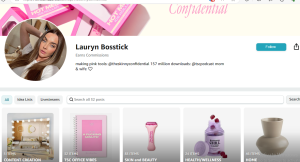
Lauryn Evarts Bosstick, owner of The Skinny Confidential Amazon storefront, started creating blogs out of boredom in 2011. She is a blogger, author, podcaster, and lifestyle Amazon influencer who shares tips and tricks about beauty, fashion, and more.
She named her storefront The Skinny Confidential to connect with women globally and discuss various topics. Some product categories on her Amazon storefront include:
Skin and BeautyHealth/WellnessTSC Office VibesHomeContent Creation2. Lia Griffith
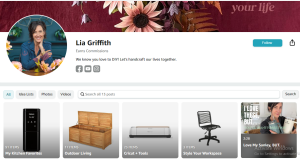
This is an Amazon storefront created by Lia Griffith. Lia inspires her followers and clients to embrace their creative side. She has a craft site where she helps people develop new skills and complete beautiful DIY projects.
Some categories of products you will find on her Amazon storefront include:
Paper Flower Arrangement SuppliesMy Kitchen FavoritesStyle Your WorkplaceCricut + ToolsOutdoor Living3. The Heart and Haven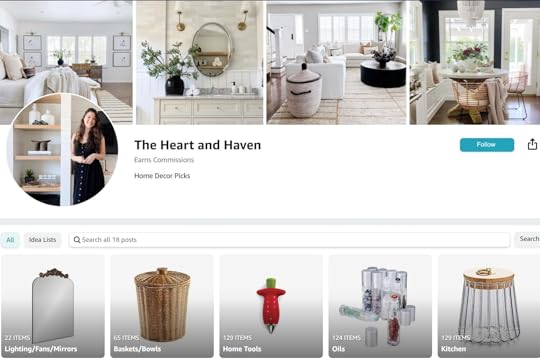
Erin is a lifestyle influencer who shares inspirational tips on various products. She loves showing and sharing her passion for home decor and lifestyle with her followers. The Amazon Influencer program allows her to earn money from recommending her favorite products.
Here are some product categories on her storefront:
Home ToolsKitchenOilsErin’s Sexy Read ListHoliday4. Ryan’s World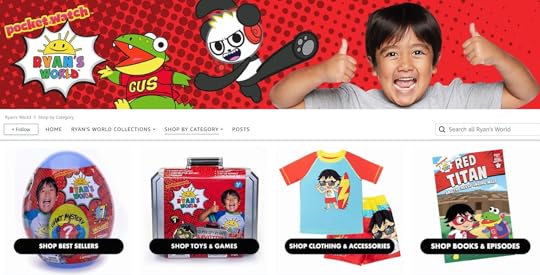
Ryan’s World is an Amazon store run by the young sensation Ryan Kaji. He is a child influencer who became popular among kids by unboxing and reviewing toys. Ryan joined the Amazon influencer program to connect with more kids and recommend products directly to them.
Featured categories:
Toys & GamesClothing & AccessoriesWatch and ReadSports & PlayBest Sellers5. Linus Tech Tips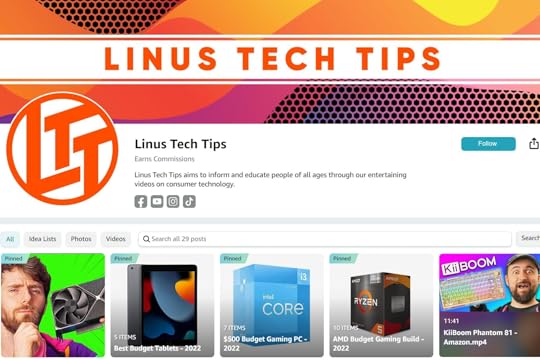
Linus Sebastian is the creator behind Linus Tech Tips. He is a prominent tech influencer with over 27 million subscribers on YouTube. In 2014, Tubelifter included Linus in the top 1% of Google’s preferred tech advertisers on YouTube.
Linus unboxes, reviews, and shares tips about tech products through his storefront for his Amazon followers. Some of his works on Amazon include:
Best Budget Tablets$5oo Budget Gaming PCsAMD Budget Gaming BuildSuggested Dash CamsMost Average PCsTips for Aspiring Amazon Influencers
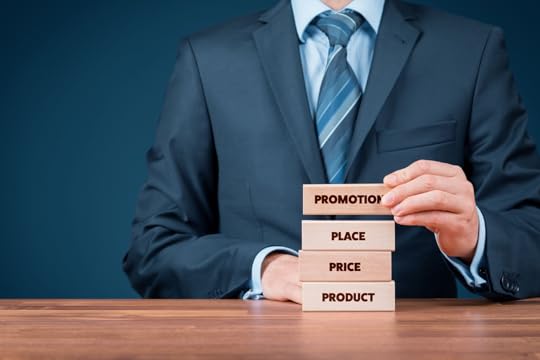
If you’re looking to become a successful Amazon influencer, consider these practical tips to get started on the right track:
1. Finding your niche and target audience.Before diving into the world of Amazon influencer marketing, choosing a niche you’re truly passionate about is crucial. Additionally, take the time to research and understand the interests and preferences of your target audience to ensure your content resonates with them.
2. Creating and optimizing your influencer storefront.Your Amazon influencer storefront is like your online shop window. Ensure it’s complete, well-organized, and provides all the necessary information about your niche and the products you promote. Regularly update your storefront with fresh content and relevant product recommendations.
3. Develop a content strategy that aligns with your storefront.To engage your audience effectively, plan your content to complement the products in your storefront. Also, consistency in your posting schedule and diversification of content formats, such as videos, blog posts, and social media updates, can help keep your audience engaged.
4. Building partnerships with brands and leveraging Amazon Affiliates.Collaborating with brands that align with your niche can open doors to new opportunities. You should also join the Amazon Affiliates program to earn commissions on sales generated through your links. However, you should always be transparent about your affiliate relationships with your audience.
5. Measuring and analyzing performance.Utilize Amazon’s analytics tools to monitor the performance of your storefront. Pay close attention to audience feedback and adjust your strategy accordingly. It’s also essential to set clear goals for your influencer journey and regularly track your progress to ensure you’re on the right path to success.
Final ThoughtsSuccessful Amazon influencers have harnessed the power of influencer storefronts through strategic branding, high-quality content, niche alignment, audience engagement, and Amazon’s resources. Their achievements serve as a testament to the potential for influencers to thrive on the platform. As an aspiring influencer, you can take inspiration from these strategies to embark on your path to Amazon influencer success.
Are you seeking an expert to increase your sales on Amazon? Get the best Amazon ad agency.
Frequently Ask Questions on Amazon Influencer Storefront ExamplesDoes an Amazon Influencer have the right to sell a brand’s products on Amazon?No. When Amazon influencers join the program, they are only required to promote products. They don’t have the right to sell the product themselves.
Is there another way to earn a commission on Amazon?Yes, there are multiple choices for earning a commission at Amazon, including the Amazon Associates Program, Amazon Hand Made, and more. Each program in Amazon has its approach and requirements.
As an Amazon Influencer, can I promote my products on Amazon?Yes, as an Amazon Influencer, you can promote your own personal products on Amazon, but you should keep the Amazon guidelines in mind.
Related ArticlesHow to Sell Used Items on Amazon
September 7, 2023
TikTok Captions: All You Should Know

Do you want to learn how to write captivating TikTok captions?
TikTok captions play a crucial role in boosting engagement and conveying messages effectively. You can capture your audience’s attention with just a few words, but you need to do it right.
This guide will help you master how to craft compelling captions that will make your TikTok videos resonate, trend, and leave a lasting impact.
What Is a TikTok Caption?TikTok captions are the text you add to your video to give it context, humor, or to emphasize your message. They appear on the screen as your video plays.
Why do you need captions?
Captions grab people’s attention. Not everyone can turn on the sound, so captions help convey your message. They also make your video more engaging, encouraging viewers to stick around.
How To Add Captions to Your TikTok VideosAdding captions to your TikTok videos is easy! Here’s how:
Shoot your video.Click on “Captions” before posting.Type in your caption or use auto-captions.Adjust the caption’s appearance and timing.Post your masterpiece!Read more: How to edit TikTok captions.
The Auto Caption Feature on TikTok.Rather than thinking about the captions you want to add to your TikTok video, you can take advantage of auto captions. This feature will make things easier by automatically generating captions. Follow these steps to use the feature:
Get the latest version of the TikTok app: Ensure you have the app’s latest version, as older versions may lack some updated features.Record or upload a video: Tap the plus button at the bottom of your screen, then record or upload your video.Access captioning options: After recording or uploading your TikTok video, tap the “captions” button on the video editing page. You will find the auto caption feature on the next screen; activate it.Review and edit: You can review and edit your auto-generated captions. Edit to correct issues and boost accuracy. To edit auto-captions, you only need to tap the pencil icon in the caption option under your video.Customize styling: Depending on your style and the editing features available, you can customize your captions’ style, color, and position to make your video more appealing and engaging.Finalize and publish: Before you publish your video, you should finalize and review it to prevent mistakes because simple mistakes can greatly reduce the impact of your video. Once you are satisfied, you can post it.Crafting Engaging TikTok CaptionsCreating TikTok captions that captivate your audience is an art. Let’s break it down simply:
Demographics: Get to know your audience’s age, location, interests, and preferences. Tailor your captions to resonate with them.Interests: Research the trending topics and themes your audience is passionate about. Align your captions with these interests for better engagement.Clarity and conciseness: Keep your captions concise and easy to understand. Avoid jargon or overly complex language. TikTok viewers scroll quickly, so make every word count.Emojis and symbols: Emojis can express emotions, add humor, or create emphasis. Use them sparingly to enhance your caption’s impact.Hashtags: Incorporate relevant hashtags to increase the discoverability of your videos. Choose a mix of popular and niche hashtags, but don’t overdo it.Narrative Hooks: Start your captions with a compelling hook or question to pique curiosity. Use the rest of the caption to tell a brief story or provide context for your video.Convey emotions: If your video is emotional or heartwarming, convey those feelings in your caption. Share the story behind the video to connect with your audience more deeply.Humor: Humor is a fantastic way to engage viewers. Craft witty captions or use puns that align with the tone of your video. Just be sure the humor is appropriate for your target audience.Authenticity: Be yourself in your captions. Authenticity is highly valued on TikTok. Let your unique personality shine through, and don’t be afraid to experiment with creative captions.Final ThoughtsIn the world of TikTok, captions are your secret sauce for success. They grab attention, tell stories, and connect with your audience. So, embrace the power of captions, get creative, and watch your TikTok game soar!
Are you considering promoting your brand on TikTok? Guarantee the best results with the number 1 TikTok advertising agency!
Frequently Ask Questions on TIK TOK CaptionsCan I hide captions on my TikTok videos?Yes, it is! Some TikTok users prefer to hide captions on their videos to make them look cleaner and simpler. To hide it, go to your profile, tap your video, tap the three dots, and tap off captions.
How can I change the translation language in my captions?You can change it by tapping the globe icon on the left side, parallel to a pencil icon in the caption options. You can also change it before you post your video, tap more option, then Select caption language.
Can I edit the caption of a TikTok video from another person once I save it?No, you cannot edit it. The caption of the TikTok video you save is already part of the original video.
Related ArticlesHow to Sell Used Items on Amazon: Guidelines for Beginners

Would you like to learn how to sell used items on Amazon?
If you have a garage of handbags, sports collectibles, toys, consumer electronics, home appliances, etc., you are sitting on a goldmine. You can sell all of your old stuff on Amazon.
What’s more, selling items on Amazon is easier than you might think. In this guide, we’ll discuss how to sell used items on Amazon.
We will cover the following:
Used Items You Can Sell on Amazon.Used Items You Can’t Sell on Amazon.How Amazon Sorts Used Items.Places to Find Used Items to Sell on Amazon.How to Sell Used Items on Amazon.Tips on How to Sell Used Items on Amazon.Used Items You Can Sell on AmazonBefore selling used items on Amazon, you should understand which ones are accepted. The good news is that Amazon accepts a wide range of used items. Below are the different categories of items you can sell:
1. BooksBooks are one of the most popular categories of used items you can sell on Amazon. Whether you have novels, textbooks, or rare collector’s editions, you can list them for sale in the “Books” category. Ensure you accurately describe the book’s condition to attract the right buyers.
2. ElectronicsIf you have gently used major appliances, you can list them in the “Electronics” category. These appliances include personal computers, photo-cell phones, Amazon Fire TV accessories, video DVD Blu-ray, consumer electronics, etc. However, you should provide detailed information about their condition, specifications, and any included accessories.
3. Home & KitchenDo you have pre-owned home décor and kitchen appliances? You can list them in the “Home & Kitchen” category. However, ensure your items are clean and in good working condition. You should also provide accurate information about the appliances’ specifications, condition, and extra accessories.
4. Clothing, Shoes & JewelryAmazon’s “Clothing, Shoes & Jewelry” category is great for selling used clothing and accessories. Whether it’s fashionable clothing, shoes, or stylish handbags, there’s a market for secondhand items on Amazon. When listing used clothing and accessories, you should accurately describe their condition.
Additionally, all used clothing and accessories must be clean and free from stains, odors, and damage. You should also provide accurate sizing information to ensure customers receive items that fit as expected.
5. Musical InstrumentsYou can list musical instruments, whether guitars, keyboards, or trumpets, under the “Musical Instruments” category. When listing used musical instruments, you must accurately describe their condition, including flaws, wear, or imperfections.
In addition, ensure the musical instrument is in good working order by checking for functionalities like keys, strings, or electronics. Also, list and describe any accessories or components that come with the instrument and verify its authenticity.
6. Sports and OutdoorsIf you have sports equipment or outdoor gear you do not need, the “Sports & Outdoors” category is the place to sell it on Amazon. When listing sports and outdoor equipment, you must accurately describe their condition, including flaws, wear, or imperfections. Also, please ensure the equipment is in good working order by checking its functionalities.
7. AutomotiveThe “Automotive” category lets you sell used auto parts, tools, and accessories. However, you should note that detailed listings with part numbers and conditions are essential here. You must include condition details like flaws, wear, or imperfection. In addition, Clearly State the year, make, and model of the to avoid compatibility issues.
8. Video GamesGamers love finding deals on used Blu-ray video games and gaming consoles in the “Video Games” category. To satisfy your gamer customers, describe the conditions of the video games and consoles while listing them.
9. Health and Personal CareYou can list certain health and personal care items, such as fitness trackers, in the “Health & Personal Care” category. But you must ensure that these items are safe and hygienic for sale before listing them. Also, it would be best if you described the conditions of the items accurately while listing.
Used Items You Can’t Sell on Amazon

While Amazon welcomes the sale of used items in various categories, there are certain categories where selling pre-owned goods is prohibited. It would be best if you respected Amazon’s policies. The following are the categories of items you can’t sell on Amazon:
1. Grocery and Gourmet FoodAmazon has strict guidelines for selling food items, so it is no surprise that it prohibits the sale of used groceries. This rule ensures the safety and quality of food products for customers.
2. Beauty and Personal CareWhile you can sell some health and personal care as used, certain products like cosmetics, skincare, and toiletries are not eligible. Amazon prioritizes customer safety and hygiene in this category.
3. Pet SuppliesUsed pet suppliers, such as pet food, pet beds, and grooming products, are generally prohibited. Amazon ensures the well-being of pets by providing new and unopened products.
4. Baby ProductsAmazon doesn’t allow selling used baby products, including baby food, diapers, and formula. However, some exceptions may apply to products that can be safely used, like baby clothing or strollers.
How Amazon Sorts Used ItemsAmazon classifies used items into several condition categories to help buyers understand the condition of the products they are purchasing. Below is the classification of used items on Amazon:
New: These items are brand new, never used, and normally come in original packaging with all accessories and tags.Used – Like New: Items in “Like New” condition are nearly indistinguishable from the new ones. They should show no signs of wear and tear and come with all original accessories and packaging.Used – Very Good: “Very Good” items have been used but are still in excellent condition. They may have minimal signs of wear and tear and should include all original accessories.Used – Good: Items in “Good” condition have been used and may show moderate wear and tear. They should be fully functional and without missing accessories.Used – Acceptable: “Acceptable” items have been used and show noticeable wear and tear. They should still be functional, but accessories might need to be included.Refurbished: Refurbished items have been professionally restored to work like new ones. They normally come with a warranty and are a reliable option for buyers looking for quality at a lower price.Renewed: Renewed items are similar to refurbished ones, professionally inspected and tested, and backed by a warranty. They are a reliable choice for budget-conscious buyers.Used – Unacceptable: Items classified as “Unacceptable” due to their poor conditions can’t be sold on the platform.Places to Find Used Items to Sell on AmazonYou can find used items to sell on Amazon from various sources. The following are places to look for used products:
Your home: Start by looking around your house because many things you no longer need or use might be valuable to someone else.Thrift stores: Thrift stores and secondhand shops are great places to find used items cheaply.Garage sales: Attend garage sales in your neighborhood or nearby areas, as you can always negotiate lower prices.Flea markets: Flea markets often have various used products you can buy and resell on Amazon.Online marketplaces: Check other online marketplaces like eBay, Craigslist, or Facebook Marketplace for used items you can resell on Amazon.Estate sales: Estate sales can be a treasure trove of valuable used items, especially antics and collectibles.Auctions: Local auctions or online auction websites can offer used items for resale.Wholesalers: Some wholesalers specialize in bulk lots of used items, which can be a convenient source for inventory.Liquidation sales: Liquidation sales from retailers or online liquidation marketplaces can provide discounted used items in bulk.How To Sell Used Items on AmazonIf you want to want to sell used items on Amazon, follow the simple steps below:
Step 1: Get started with an Amazon seller account.The first step to selling used items on Amazon is to create an Amazon seller account. You can sign up for a professional or individual account, depending on how much you plan to sell. If you are an occasional seller, the individual account is ideal for you, but if you intend to sell regularly, the professional account suits you.
Step 2: Choose your used items wisely.Before you start listing your used items on Amazon, take your time to evaluate what you want to sell. Amazon has certain restrictions on what sellers can sell, so ensure your items meet their guidelines. Also, consider the condition of your items because the better the condition, the more likely they are to sell.
Step 3: Research and price your items competitively.You can search for similar used items on Amazon to understand competition and pricing. Setting a competitive price will increase your chances of making a sale. Be honest about the condition of your items in your listings to build trust with potential buyers.
Step 4: List your items.To list your used items on Amazon, go to your seller account and click on “Add a Product.” Follow the prompts to provide information about your used product, including its title, condition, and price. You can also add high-quality photos to attract more buyers.
Step 5: Fulfillment options.Amazon provides sellers with two fulfillment choices: Fulfillment by Merchant and Fulfillment by Amazon. With Fulfillment by Merchant, you will handle storage, shipping, and customer service. But with Fulfillment by Amazon, Amazon handles everything for you. You should choose the fulfillment method that best suits your budget and business.
Step 6: Shipping your item.If you choose Fulfillment by Amazon, Amazon will handle shipping for you. However, if you opt for Fulfillment by Merchant, you must ship the items yourself. In that case, please ensure you package your items securely and provide tracking information to buyers.
Step 7: Customer service and communication.Be responsive to customer inquiries and provide outstanding customer service. Positive reviews and satisfied customers can enhance your seller’s reputation and increase your used items’ sales.
Step 8: Manage your inventory.You can keep track of your inventory to avoid overselling or running out of stock. Amazon provides tools to help you manage your listings and inventory effectively.
Step 9: Promote your listings.You should consider hiring an Amazon advertising agency to promote your listings and reach a wider audience. Also, you can share your listings on social media or other online platforms to increase visibility.
Step 10: Monitor your performance.Check your seller account regularly for sales, customer feedback, and any issues that may arise. Monitoring your seller account will help you identify areas for improvement and ensure a smooth selling experience.
Tips on How To Sell Used Items on Amazon

The following are useful tips on selling used items on Amazon:
Accurate descriptions: Write detailed and honest descriptions of your used items, including any wear or flaws. Transparency builds trust with buyers.Quality photos: Use clear and well-lit photos from multiple angles to showcase your used items. Snapping high-quality pictures of your items attracts buyers.Competitive pricing: Research similar listings to set competitive prices. Consider factors like item condition, brand, and market demand.Accurate categorization: Place your items in the correct Amazon category to ensure the right audience sees them.Condition matters: Choose the right condition category, like “New” or “Very Good,” to match the state of your item accurately.Customer service: Be responsive to customer inquiries and handle returns professionally. Excellent customer service can lead to positive reviews.Shipping carefully: Package your used items securely to prevent damage during shipping. Provide tracking information for transparency.Promote listings: Consider using Amazon’s advertising tools to promote your listings and reach a broader audience.Positive reviews: Aim for positive reviews by delivering as promised and exceeding customer expectations.Brand authenticity: Ensure that the items you are selling are genuine and not counterfeit.Stay compliant: Familiarize yourself with Amazon’s policies and guidelines to ensure compliance with their rules and regulations.Research and trends: Monitor market trends and seasonal demands to optimize your listings.Bundle items: Consider bundling related used items to increase the value and appeal of your listings.ConclusionSelling used items on Amazon can be a profitable venture when done right. By following Amazon’s condition guidelines, accurately describing your products, and providing excellent customer service, you can build a successful online business. So, start decluttering your space and turn those unwanted items into cash on Amazon today!
Frequently Asked QuestionCan I sell used items on Amazon?Yes, but Amazon has specific guidelines on what sellers can sell as used. Some categories, like groceries and prescription medications, are generally not eligible for selling used items.
How do I determine the condition of my used items on Amazon?Amazon provides condition categories like “New,” “Used – Like New,” and “Used – Good” to help you describe the state of your items accurately. Review your items honestly, considering wear, functionality, and completeness.
Do I need to pay a fee to sell used items on Amazon?Yes, Amazon charges fees for selling items on their platform. There are referral fees based on the item’s category and price.
Related ArticlesCan’t Promote Due to Audio Copyright Issue on TikTok: Understanding and Resolving
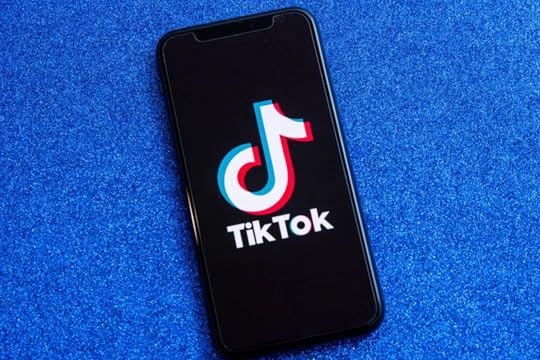
Have you been wondering why you can’t promote due to audio copyright issue on TikTok?
It’s a common frustration among creators. TikTok’s immense popularity has brought about stricter copyright policies, making it challenging to use copyrighted music or audio without consequences.
This blog post will explore why you can’t promote due to audio copyright issues on TikTok and provide solutions.
What Is Copyright on TikTok?TikTok, like any other platform, respects copyright laws. This means that if you use someone else’s audio without permission or proper licensing, you might run into trouble.
Why are copyright issues on the rise on TikTok?
TikTok has become a hub for sharing music and audio. Hence, the platform protects itself from lawsuits by providing legal protection to original creators. It ensures that users can’t use music, content, or video sound in their TikTok videos without the appropriate license or owner’s consent.
Why Are You Facing Copyright Issues on TikTok?It’s not always clear what might trigger a copyright issue. We’ll explore common scenarios that often get creators in hot water so you can avoid them.
1. Audio permission: You are using audio that doesn’t belong to you, and the owner of the audio hasn’t permitted you to use it. You can only use a piece of background music from other sources, such as YouTube, Spotify, Instagram, and more if you obtain the approval of the original artist or owner.
2. Terms and Conditions: You use the audio tracks in the TikTok sound library without following or adhering to the terms and conditions of the license agreement.
3. Commercial use: You use audio licensed for personal use only in a commercial video.
4. Durations limit: You could use an audio clip surpassing its duration or designated usage limit.
5. Cultural sensitivity: Using music subject to regional or territorial restrictions, like a track restricted to a certain country because of its sensitive lyrics.
Consequences of Audio Copyright Violations on TikTokWhen a user uploads a video that violates audio copyright rules, TikTok may:
Mute video: TikTok may mute the video’s audio or replace it with another sound.Remove video: TikTok may delete the video.Shadowbanning: In some cases, repeated copyright violations can lead to shadowbanning. Shadow banning on TikTok is a sneaky penalty that reduces the visibility of your content, making it harder for new viewers to discover your videos.Disable promotion: TikTok may turn off the option to promote or monetize your video. It’s important to be aware of these restrictions when using audio content in various contexts.Send warning: TikTok may send a warning to your TikTok account when you violate its rules. Continuous violations can lead to suspension or termination of an account.Strategies to Avoid Copyright Issues on TikTokFollow these steps to stay on the right side of TikTok’s copyright rules:
Create original content: You can avoid copyright issues on TikTok by creating original content, including videos and visuals. When creating content on TikTok, the app automatically saves and grants you copyright ownership. This means that no one can use your content without your permission.Use TikTok’s music library: TikTok has an extensive library of music and audio clips that you can use without worrying about copyright issues. It’s your safe playground for creating engaging content.Licensed music: If you want to use a specific song, consider purchasing a license. This gives you the legal right to use it in your videos.Create your own audio: Be a creator in every sense – make your own music or audio content. This unique content is 100% yours, so there are no copyright issues.Attribution and permission: If you want to use someone else’s audio, always ask for permission and give proper credit where due.Monitor TikTok’s policies: TikTok’s policies can change, so stay updated. They might introduce new features or rules that could affect your content.What to Do When You Encounter an Audio Copyright IssueWhen the inevitable happens, and you face an audio copyright issue on TikTok, here’s a clear plan of action:
Stay calm: Don’t panic. It happens to the best of us. Take a deep breath and gather information.Understand the claim: Check the details of the copyright claim. TikTok usually provides information about the copyrighted audio and the claimant.File a counterclaim: If you believe you have the right to use the audio, you can file a counterclaim. TikTok has a process for this, and it’s worth exploring if you’re confident in your case.Seek permission or licensing: If you used copyrighted audio without permission, consider reaching out to the copyright holder. They might grant you permission or offer a licensing arrangement.Adapt and move on: Sometimes, it’s best to accept the situation and adapt. Re-edit your video with non-copyrighted audio or create new content to keep your TikTok journey going.Final ThoughtsUsing audio on TikTok can be a fun and creative way to enhance your videos, but it also comes with some responsibilities and risks. You need to respect the rights of the music creators and owners. Follow TikTok’s rules and guidelines to avoid copyright issues.
Are you considering running an ads campaign on TikTok? Let the best TikTok advertising agency manage it to ensure growth and success!
Frequently Ask QuestionsHow do I know the video I created has a copyright issue?You can assess potential copyright issues in your video by comparing its content with existing copyrighted material and using online tools to check for matches.
Will I be exempt from copyright issues if the audio or music I use is popular and widely used by many people?No. Even though it is widely used by many people, you still need to get the permission of the owner to use it.
Can TikTok still detect copyright issues if I create my own audio or music?While creating your own audio or music, you can reduce the risk. TikTok can still detect a copyright issue in what you create if it resembles or closely mimics existing copyrighted material.
Related ArticlesSeptember 6, 2023
A Beginner’s Guide to Selling Wholesale on Amazon

Are you considering selling wholesale on Amazon?
Amazon is the world’s largest online marketplace, providing a vast customer base and powerful tools to Amazon sellers. Hence, selling wholesale on Amazon is an excellent choice for a wholesale business.
This beginner-friendly guide will show you how to start selling wholesale on Amazon. We will also discuss the benefits of the Amazon wholesale business and the Amazon wholesale products research tools.
What is Wholesale Selling on Amazon?The Amazon wholesale business involves purchasing products in bulk from manufacturers or authorized distributors and reselling them on Amazon. As a wholesale seller, you aim to buy low and sell high like any other retailer.
Getting Started With Selling Wholesale on AmazonFollow the guidelines below to begin your Amazon wholesale business:
Market research.You can begin by looking over which products have a demand on Amazon. Tools like Amazon’s Best Sellers, Google Trends, or third-party research tools can help you identify profitable niches.
Legal requirements.Register your business and meet all legal requirements, including tax obligations and permits. Consult with a legal professional if needed.
Source products.Endeavor to find reputable suppliers and distributors. You can attend trade shows, browse online directories, or contact manufacturers directly. However, it would be best to verify your suppliers’ authenticity to avoid counterfeit or low-quality products.
Create an Amazon seller account.Sign up for an Amazon seller account and select an individual or professional account based on your sales volume and business model.
Product listings and pricing strategy.Create compelling product listings with high-quality images and detailed descriptions. Use relevant keywords to optimize your listings for search engines. You should also set competitive wholesale prices when considering your costs, Amazon fees, and desired profit margins.
Inventory management.Monitor your inventory status to stay in stock and avoid long-term storage fees.
Shipping and fulfillment.
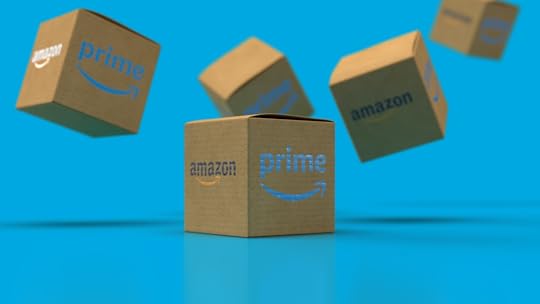
Decide whether to fulfill orders yourself or use Amazon’s FBA service. FBA can save time and provide access to Amazon Prime customers.
Customer service and marketing.Provide excellent customer service to build a positive seller reputation. Respond to inquiries promptly and handle returns efficiently. Additionally, use an Amazon advertising agency and external marketing channels to promote your branded products.
How to Create an Amazon Wholesale Selling AccountFollow the steps below to create your Amazon wholesale seller account:
Step 1: Prepare your wholesale selling business.Ensure your business is ready before starting the Amazon business account creation process. You should have the following:
A registered business entity, such as an LLC or corporation.A valid business address.A dedicated bank account for your business.Business License.Your tax identification number (EIN or VAT ID).Information about the products you plan to sell.Step 2: Visit Amazon Seller Central.Go to Amazon Seller Central, the platform for creating and managing your Amazon seller account. You can find it by searching for “Amazon Seller Central” in your preferred search engine or by typing the URL directly: https://sellercentral.amazon.com/
Step 3: Sign up and choose your seller plan.Click the “Start Selling’ icon to begin the account creation process. You can use the details on your customer account if you have one or create a new account.
Amazon offers two seller plans: individual and professional. The individual plan suits small-scale sellers, while the professional plan suits larger business models. Select the one that best matches your business needs. Note that there are fees associated with each plan.
Step 4: Enter business information and complete verification.You’ll have to provide information about your business, including your legal business name, address, and tax identification number. Ensure you enter accurate information.
Additionally, Amazon may need additional verification to ensure your business’s legitimacy. This extra verification may include providing business documents or verifying your bank account. Follow the instructions provided to complete this step.
Step 5: Set up payment information and create product listings.You need to provide your bank account information to receive payments from Amazon. Amazon will deposit your sales proceeds into your bank account. After creating your account, you can start creating product listings. These listings will offer detailed information about the products you want to sell, including product titles, descriptions, prices, and images.
Step 6: Consider fulfillment options.Decide whether to fulfill orders yourself (FBM) or use Amazon’s fulfillment centers (FBA). FBA can simplify shipping and customer service but comes with associated fees.
Read more: Amazon FBA vs. FBM.
Step 7: Start selling.With your Amazon wholesale suppliers account ready, you can start listing your products. Monitor your seller dashboard for sales and performance metrics.
The Differences Between Selling Wholesale on Amazon and Other Business ModelsLet’s dive into how Amazon’s wholesale business distinguishes itself from other common business models on the platform:
Target audience: When you sell wholesale products on Amazon, you target businesses and Amazon sellers looking to make bulk purchases. However, private label and retail arbitrage business models are quite different. These business models can target businesses and individual consumers, focusing on creating unique products or finding deals to resell.Sourcing products: As a wholesale seller, you can buy products in bulk from manufacturers or authorized distributors. However, private label and retail arbitrage models involve creating custom-branded products or sourcing products from various retail sources.Inventory management: Selling wholesale products on Amazon requires efficient management of inventory levels to ensure consistent supply for buyers. However, private label and retail arbitrage models may have more flexibility in managing inventory since they can control production or sourcing.Branding and marketing: Wholesale sellers on Amazon typically rely on established brands, so they don’t need a unique brand identity. However, the private label model involves creating and marketing your brand, which requires additional efforts in branding and promotion.Competition: As an Amazon wholesale seller, you will face competition from other Amazon sellers offering similar products. However, private label and retail arbitrage models may have less direct competition if they offer unique products or find untapped market opportunities.Pricing strategy: Amazon wholesale product prices are often competitive due to multiple sellers offering similar products. However, private-label Amazon business models have more control over pricing and can set premium prices for unique products.Product listings: Selling wholesale products on Amazon involves listing existing products on the platform, focusing on optimization and competitive pricing. However, private-label Amazon business models require creating new product listings and optimizing them for search and conversion.Pros and Cons of Selling Wholesale on AmazonYou should consider the pros and cons before entering the world of Amazon’s wholesale business model. Below, we will break down the key benefits and challenges of selling wholesale on Amazon:
ProsAmazon has a vast and diverse customer base. Hence, selling wholesale on Amazon allows you to reach millions of potential buyers worldwide.Amazon has a support system for sellers, including order fulfillment through FBA, customer support, and payment processing. This can save you time and effort.Amazon is a trusted and recognizable brand. Shoppers often feel more comfortable purchasing on a platform they know and trust.Selling wholesale goods often involves well-known brands, which can require less marketing effort compared to building a brand from scratch.By utilizing FBA, you gain access to Amazon’s Prime customers, who tend to spend more.Wholesale sellers often negotiate better prices with manufacturers or distributors due to their purchase volume. Hence, they tend to have a competitive edge on pricing.ConsAmazon’s marketplace is highly competitive, and other sellers may offer similar products at lower prices, making it challenging to stand out.Amazon charges various fees, including referral fees and storage fees. These costs may adversely affect your profit margin, especially if you sell low-margin products.As a wholesale seller, you might have limited control over pricing, especially if the manufacturer sets the minimum advertised price (MAP). The MAP can impact your ability to compete on price.Some brands may have strict requirements or restrictions on who can sell their products on Amazon. Getting approval from such brands can be challenging.Wholesale sellers need to manage inventory carefully. Overstocking can tie up capital, while understocking can lead to missed sales opportunities.Selling wholesales may not allow you to build your brand identity, as you often resell established products with existing branding.Amazon Wholesale Product Research Tools

It would be best to have reliable tools to find the most profitable wholesale products to sell on Amazon. These tools will provide insights into market demand, competition, and pricing. Below are some Amazon Wholesale product research tools and how they can benefit your e-commerce business:
Amazon Best Sellers: Amazon offers a valuable tool called “Amazon Best Sellers.” This tool provides real-time data on products performing exceptionally well on the platform. It is a great way to discover trending and popular items suitable for your Amazon wholesale business.Jungle Scout: Jungle Scout is a powerful third-party tool offering Amazon product research features. Wholesale sellers can analyze products, sales history, and estimated monthly sales. With Jungle Scout, you can find profitable niches and make data-driven decisions about which products to source and sell.Helium 10: Helium 10 is another robust Amazon research product tool with various features. It can help you find high-demand products, assess competition, and optimize your product listings. Helium 10’s “Black Box” tool lets you search for products based on specific criteria, such as sales rank and estimated monthly revenue.AMZScout: AMZScout offers a user-friendly Amazon product research tool that helps you identify profitable products quickly. It provides data on sales estimates, competitor analysis, and historical pricing trends. In addition, it offers a convenient Chrome extension for on-the-fly research while browsing Amazon.CamelCamelCamel: CamelCamelCamel focuses on tracking the price and sales history of products on Amazon. By analyzing historical data, you can spot trends, assess product price fluctuations, and make informed decisions about when to buy and sell.Keepa: Keepa is another excellent tool for tracking price and sales history. It offers a browser that displays pricing graphs and historical data directly on Amazon product pages. Keepa can help you decide if a product has consistent demand or if it is a seasonal item.Sellics: Sellics provides an all-in-one solution for Amazon sellers, including product research tools. It offers insights into keyword rankings, competition analysis, and profitability estimations. Sellics also allows you to monitor your products’ performance and adjust your strategies accordingly.Viral Launch: Viral Launch offers a product research tool to help you find profitable products by analyzing Amazon’s vast marketplace data. Features like market trends and competitor tracking simplify identifying products with growth potential.ConclusionSelling wholesale on Amazon can be lucrative but requires dedication, research, and a solid strategy. By studying the information in this guide, you can build a successful wholesale business on Amazon. Remember that success may take time, so stay patient and keep learning to grow your business steadily.
Frequently Asked QuestionsWhat is wholesale selling on Amazon?Wholesale selling on Amazon involves purchasing products in bulk from manufacturers or authorized distributors and reselling them on Amazon’s platform. It is a business model where you buy low and sell high to make a profit.
How do I find suppliers for wholesale selling on Amazon?You can find suppliers through various channels, such as attending trade shows and using online directories. You can also locate suppliers by contacting manufacturers directly or working with authorized distributors.
Do I need a business entity to sell wholesale on Amazon?Yes, having a registered business entity, such as an LLC or corporation, is generally recommended when selling wholesale on Amazon. It helps with tax compliance and provides legal protection.
Related Articles


